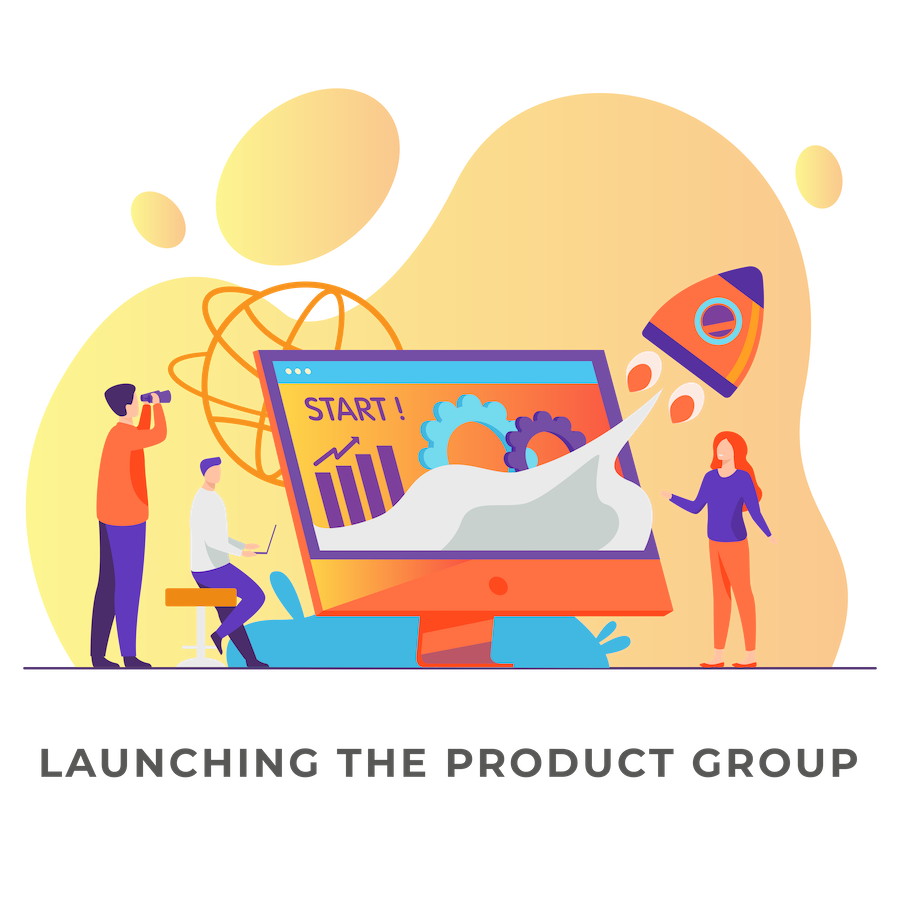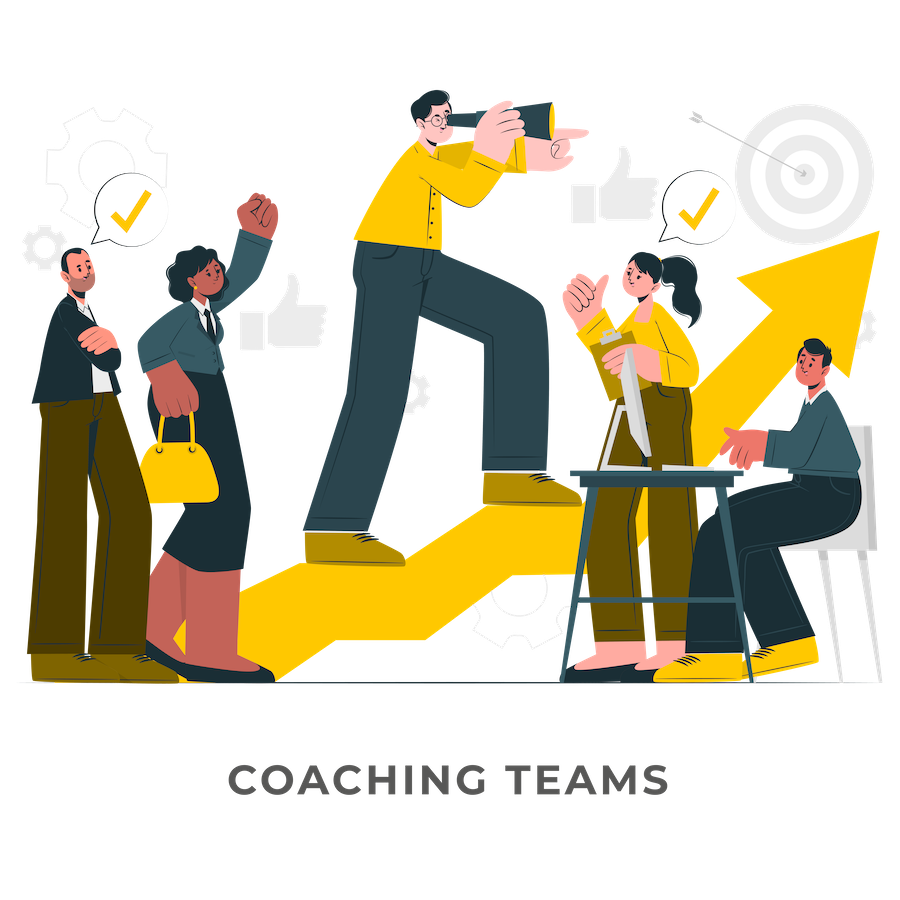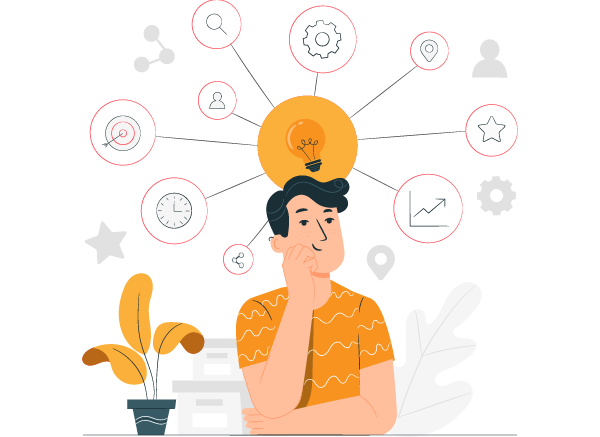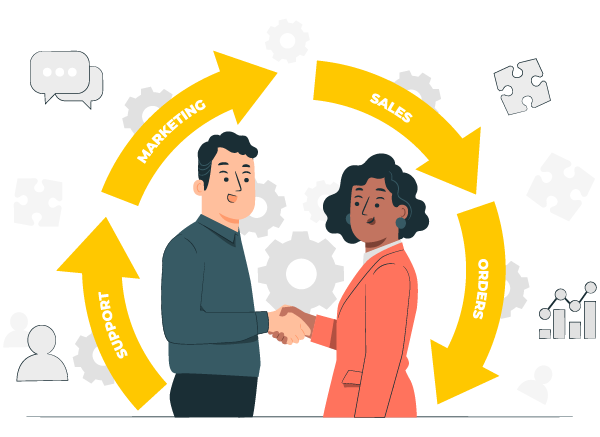
Are you ready to take your company’s Agile adoption to the next level? Don’t make the mistake of viewing Agile as just a set of tools and techniques for your teams. While Agile teams are certainly powerful, they’re just a small piece of a much larger puzzle. Without a true culture shift, your efforts will fall short, and your teams will start to slow down – it’s a recipe for disaster.
So what’s the solution? It’s not just about following the rules of Scrum or adopting a few workshops and cross-functional teams. Instead, your culture needs to transform so that your organization is laser-focused on delighting customers and improving your processes, products, and overall operations.
We’ve spent years working with organizations just like yours, both those just starting out on their Agile journey and those who have been at it for years. And we’ve learned some key principles along the way that we believe are essential to a successful Agile adoption. Here’s a quick summary of what we’ve found to be most important:
Start with your customer.
Are you looking to build a successful product that meets your customer’s needs? It all starts with understanding your market and designing your products accordingly. But it doesn’t stop there! Then design the organization as product groups to learn fast about the customer needs in service of adapting to change.
By identifying your customer’s value, you can improve your product and the process of value creation.
Change the system of work.
But how do you change the system of work to make it happen? It’s not about changing the culture directly, as leaders can’t control it. Instead, you need to change the Organizational Design, which will then change people’s behavior (the culture). As prof. John Seddon says, “when you change the system, people’s behavior changes”
Leadership support.
Implementing change is a journey filled with complexities, risk, and organizational impact. That’s why senior management’s committed participation is crucial to your success. They must lead from the top down, practicing “Go See” to understand what’s happening in the organization, decide on optimization goals, and make vital decisions regarding organizational design. By changing the system of work, you can create an Agile organization that’s built to last.
Bottom Up Intelligence
Engage the vast amount of intellect by empowering your teams from the bottom up! Allow them to take full responsibility for their processes and give them the freedom to innovate and create products that will truly delight your customers.
Manage Knowledge
One key aspect of successful Agile adoption is knowledge management. Encourage your teams to share the valuable knowledge they gain while solving impediments specific to their setting. This will prevent reinventing the wheel and help the entire organization learn and grow together.
Planning and Execution
Planning for Agile adoption can seem daunting with so many variables, parallel activities, paths, and feedback loops. However, it’s important to remember that planning is an iterative process. Plan to replan and be open to change along the way!
Launching your first product group can take anywhere from a few weeks to a few months, but don’t let preparation take too long. Prolonged preparation can drain your team’s energy and enthusiasm, leading to a lack of momentum for change.
We recommend learning as you go rather than striving for perfection right from the start. After launching, the focus should shift to supporting the teams and product ownership in the new way of working. Get ready to see amazing results and a more agile organization!
Overview of an Adoption Approach
To provide an overview of the adoption approach, we start with a bird’s-eye view of the activities crucial for large-scale adoption and reference the chapters where you can find the activity details. After that, we provide overarching adoption guidelines.
A Bird’s-Eye View of Adoption Activities
We have found the following topics crucial for an Agile transformation. We don’t presume you’ll follow a hierarchical, order-specific process because you’re dealing with a complex system. Many of the activities occur in parallel, some of them happen before the product group launch, and some may happen mid-transformation. In some contexts, you may consider some activities irrelevant.

In this section, we’ll show you how to do just enough preparation to ensure a successful start.
Involve the managers.
It is difficult to grow effective Scrum teams without senior management involvement. That is because these executives have the authority to resolve organizational impediments and change the system of work. Avoid starting your adoption without making sure senior leadership is onboard and involved. Don’t expect senior management to be committed yet, as they have likely not experienced real Agile development yet.
Understand the current reality.
Often people start an Agile transformation without a deep appreciation of the current reality. To find the areas of highest leverage, you need to carefully understand the current reality first. This includes a brutally honest understanding of your current development process and management system.
Create a vision of what to become.
It is crucial to align everyone involved on the vision of what you want to achieve with the transformation: The path: Business objectives → Optimization goals → Teams’ expectations. Alignment creates a clear goal and focus. It can also be improved with change stories.
Identify the product.
The product definition determines which organizational elements (people, components, processes, and systems) will be part of the first step in the transformation.
Hold awareness sessions.
Organize sessions that people can attend to discover and learn about adopting the Agile way of working. For example, you might organize periodic sessions on Tuesdays and Thursdays, where people are free to walk in and attend. In these sessions, management and you can engage with the participants on the reasons, objectives, and ideas for the adoption.
Practice nonviolent education.
Teach the why behind the Agile processes, structure, and values to create deep understanding. Invite people and teach whoever comes in. If the workshop is good enough, there will be a word-of-mouth effect and new volunteers will show up soon.
Volunteer to participate in the product group.
It is not fair to ask people to volunteer for something they do not understand yet. People outside the product group might want to join, and people inside the product group might want to leave it. Facilitate a volunteering session after educating the people about the implications of working in the product group.
Co-create the change.
Invite the people impacted by transformation to co-create the change, to share ideas, hopes, and dreams. Co-creation increases the chances of success for any change or product initiative.
Hold knowledge sharing workshops.
People might want to learn about new product work areas before the first iteration. The current functional teams should organize mobbing workshops that people can join to learn more about their functions and product work areas.

We’ve put together a list of activities and workshops that we find useful for a successful launch. Use the ones that fit your specific context and make your launch as unique and memorable as your product itself.
Create the product definition of done (DoD).
DoD is everything a team must do to a feature so that the product is still ready for delivery to end users with the new feature added to it.
Hold a feature team adoption map workshop.
Aligning on feature team adoption is the first step and a potential next step toward creating the perfect feature team.
Hold a self-designing teams’ workshop.
Facilitate a workshop where people volunteer to be part of a specific team.
Hold team lift-off workshops.
Facilitate lift-off workshops to lay a solid foundation for team success.
Identify and launch communities. Create conditions for communities to emerge that address cross-cutting concerns within the product group.
Identify coordination mechanisms.
With the elimination of single-function teams, determine which coordination mechanisms and team roles are required.
Facilitate decision making.
Create decision rules that will guide teams in their work.
Create useful checklists.
Reduce uncertainty by creating checklists that address typical problems in a large-scale environment.

Below we share tools and techniques to guide team development and facilitate healthy team dynamics.
Help a group to become a team.
Reward behaviors that build healthy team dynamic and communicate the purpose.
Provide coaching for multifunctional learning.
Create a team whose members can work on multiple kinds of tasks—that is, a team of multi-skilled individuals.
Grow Agile engineering practices.
Agile development works only with the right development practices in place. In the context of software development, moving to Agile development means delivering high-quality software during every iteration. The teams involved will learn where they need skills to operate in a more Agile manner.
Provide systemic team coaching.
Improve the performance of a team by improving how the team members interact.
Improve team dynamics.
Create a culture of trust and psychological safety—one that’s characterized by radical candor and facilitated conflict.
Emphasize continuous learning.
Define measures that drive learning.

The Product Owner steers the direction of the product, and keeps everyone on board motivated and focused.
The Product Owner
Find a person with the right capabilities to drive product development, manage stakeholder relationships, and ensure deep understanding of the market and customer needs.
Customer understanding
If you don’t understand whether you are solving the right problems, you can end up with a lot of quality features that have no customer value.
Product ownership measures
Measure customer value, business impact and team performance.
Stakeholder alignment
Prepare end users and stakeholders for working closer with the teams on requirements clarification.
Leadership: Know how to lead and guide teams at scale through visioning and style.
In Summary,
Are you ready to revolutionize your organization’s approach to Agile adoption? In this article, we provided you with a sneak peek of the activities that will set you up for success.
But first, let’s talk about the most critical piece: your leading group. This team should consist of individuals from all levels of your organization who will be your champions of change. Ready to dive in and start learning fast? We recommend avoiding enterprise-wide adoption and instead working with a single product group at a time.
Here’s where the magic happens. By taking a radical discontinuous improvement step and establishing a complete product group from the start, you can set them up for success and give them all the support they deserve. And the best part? The teams themselves should create their processes, ensuring ownership of the new way of working.
Don’t fall into the trap of “spreadsheet Agile adoption”! Instead, take a systems view toward organizational coaching and use Scrum patterns to solve problems that optimize your product group’s goals. Are you ready to see what a difference this approach can make? Let’s do this!








